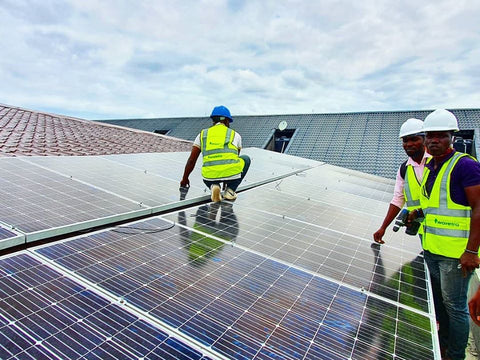As Pakistan continues to face energy challenges, many homeowners are turning to solar power as a reliable and sustainable alternative. Solar energy not only helps reduce electricity bills but also contributes to a greener environment. However, a common question among those interested in this technology is: how many solar panels are needed to power a house? The answer depends on several factors, including your household’s energy consumption, location, and the efficiency of the solar panels.
In this article, we’ll break down the key considerations to help you understand what size solar system you might need to power your home effectively.
Estimating Your Household Energy Consumption
The first step to determine how many solar panels you need is to assess your current electricity usage. In Pakistan, the average monthly household electricity consumption varies widely depending on location, family size, and appliance usage. On average, a typical home uses between 300 to 900 kWh per month.
You can easily check your monthly electricity consumption by reviewing your utility bill from companies like K-Electric or your local electricity provider. This figure will serve as a baseline for calculating the solar power system size.
For example:
- A small family in a city might consume about 400 kWh per month.
- Larger households with more appliances could consume upwards of 800 kWh per month.
Solar Panel Output and Sunlight in Pakistan
Pakistan enjoys abundant sunlight throughout the year, with an average of 5 to 6 hours of effective sunlight daily in most regions such as Karachi, Lahore, Islamabad, and Multan. This excellent solar exposure means solar panels can generate significant electricity even with fewer panels.
Typically, a standard solar panel has a power output ranging from 300 to 400 watts. Let’s take a 350-watt panel as an example. Under optimal sunlight conditions, one panel can produce approximately 1.75 kWh per day.
If your home uses 600 kWh per month (about 20 kWh per day), you would need roughly 12 solar panels of 350 watts each to meet your daily energy requirements fully.
Roof Space and System Layout
A typical solar panel measures about 1.6 square meters, so for 12 panels, you would need around 20 square meters of clear, unshaded roof space. The orientation and tilt of your roof also affect panel performance. South-facing roofs with an angle between 20 and 30 degrees usually provide the best results in Pakistan’s climate.
If your roof space is limited, you might consider higher-efficiency panels or a hybrid system combining solar power with the grid to cover peak energy demand.
Grid-Tied or Off-Grid Systems in Pakistan
Many homeowners in Pakistan opt for grid-tied solar systems, especially in urban areas with access to reliable electricity grids. Grid-tied systems allow you to use solar power during the day and draw electricity from the grid at night or when solar generation is low.
However, in rural or remote areas where grid access is unreliable, off-grid solar systems with battery storage are preferred. These systems require more solar panels to store enough energy for night-time use and cloudy days.
Benefits of Choosing Green Solar Solutions
Investing in green solar solutions offers Pakistanis a sustainable way to reduce their electricity bills and reliance on fossil fuels. Solar power systems reduce carbon emissions and help alleviate the country’s energy crisis by providing clean, renewable energy.
Many Pakistani companies now offer comprehensive green solar solutions that include solar panel installation, maintenance, and after-sales support. These services help homeowners maximize their energy production and system lifespan.
Calculating Your Exact Needs
Here is a simple way to estimate the number of panels required:
- Calculate your daily energy consumption:
- Divide your monthly electricity usage (kWh) by 30.
- Example: 600 kWh / 30 = 20 kWh per day.
- Determine panel output per day:
- Multiply your panel wattage by average sunlight hours and convert to kWh.
- Example: 350 watts × 5 hours = 1,750 watt-hours = 1.75 kWh per panel per day.
- Divide daily consumption by panel output:
- 20 kWh / 1.75 kWh ≈ 12 panels.
Keep in mind that system losses due to wiring, inverter efficiency, and weather conditions may require adding 10-15% more capacity to your system.
Final Thoughts
Deciding how many solar panels are needed to power a house in Pakistan depends mainly on your energy usage and local sunlight availability. On average, a typical family home can be powered by a system of 10 to 20 solar panels, depending on daily consumption and system design.
By choosing reliable green solar solutions, you not only secure a stable energy future for your home but also contribute to Pakistan’s environmental sustainability efforts. With the country’s excellent solar potential, switching to solar energy has never been more practical or affordable.
If you’re considering solar power for your home, consult with a professional provider who understands the local market and can design a system that fits your needs perfectly.





Comments